Captain’s Log: Summer of 2017
As I worked on the sponsons, I diverted frequently from that task to building the rangefinders and lifeboats & cutters. Once again the AOTS Takao technical drawings were a godsend. The lifeboats were all made from pine. Cut and sanded to shape. The deck and upper works were then built with styrene. I was unhappy with the two small cutters that flanked the bridge and, as you will see later, I tried a different approach for completing them.
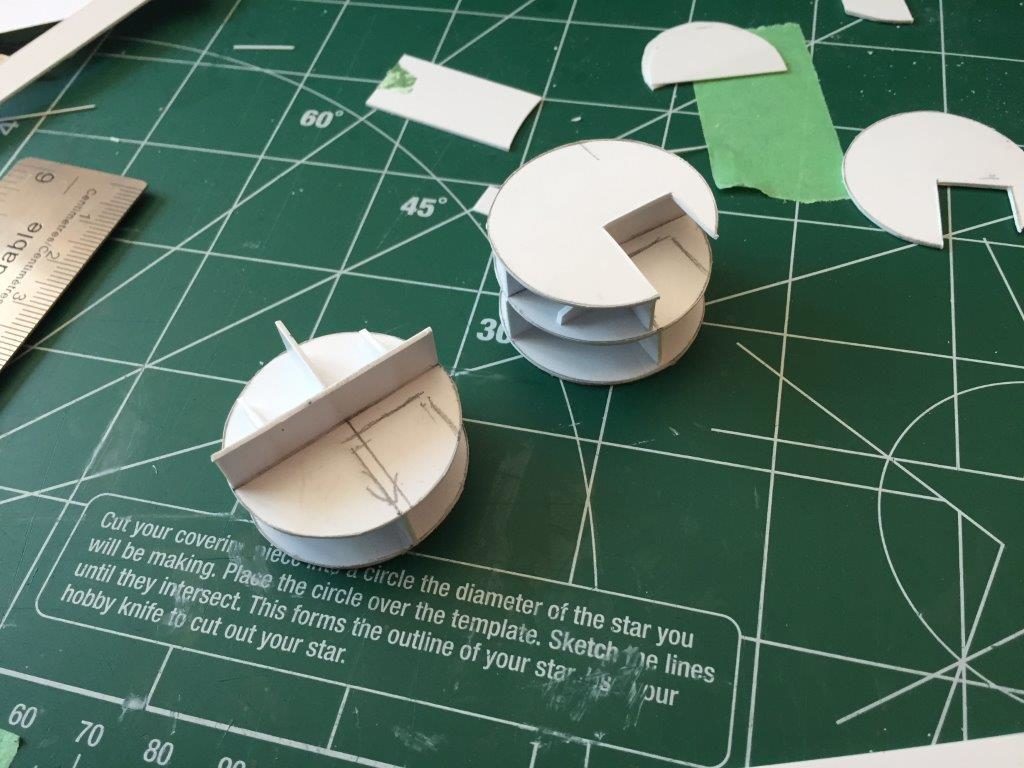

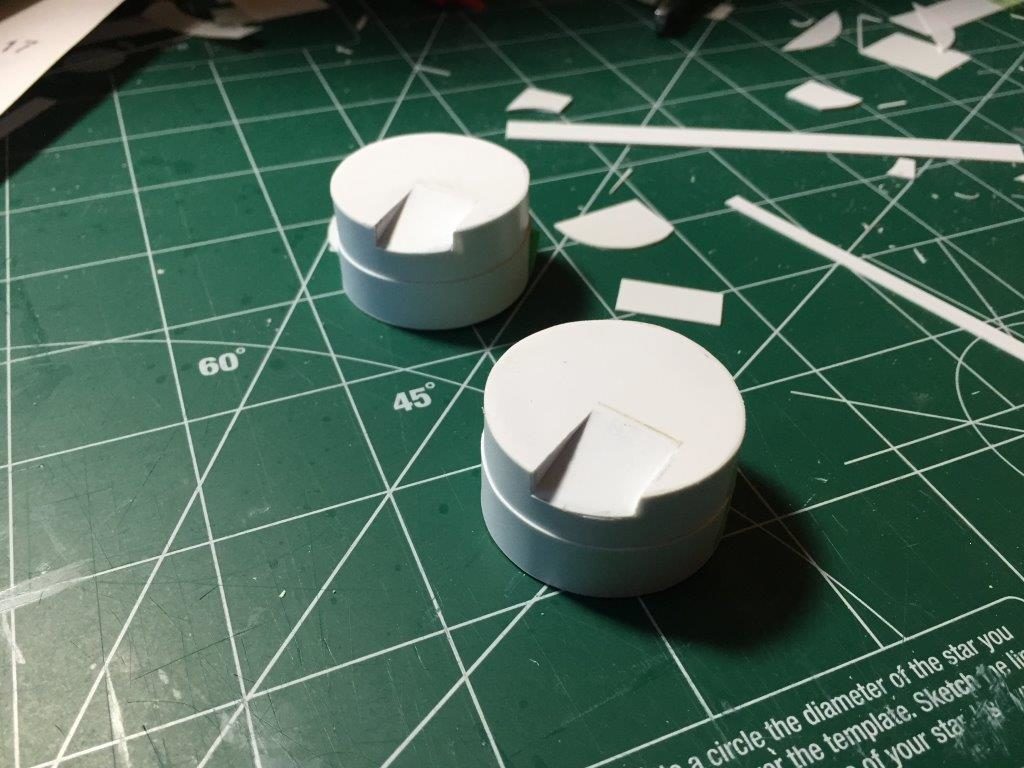
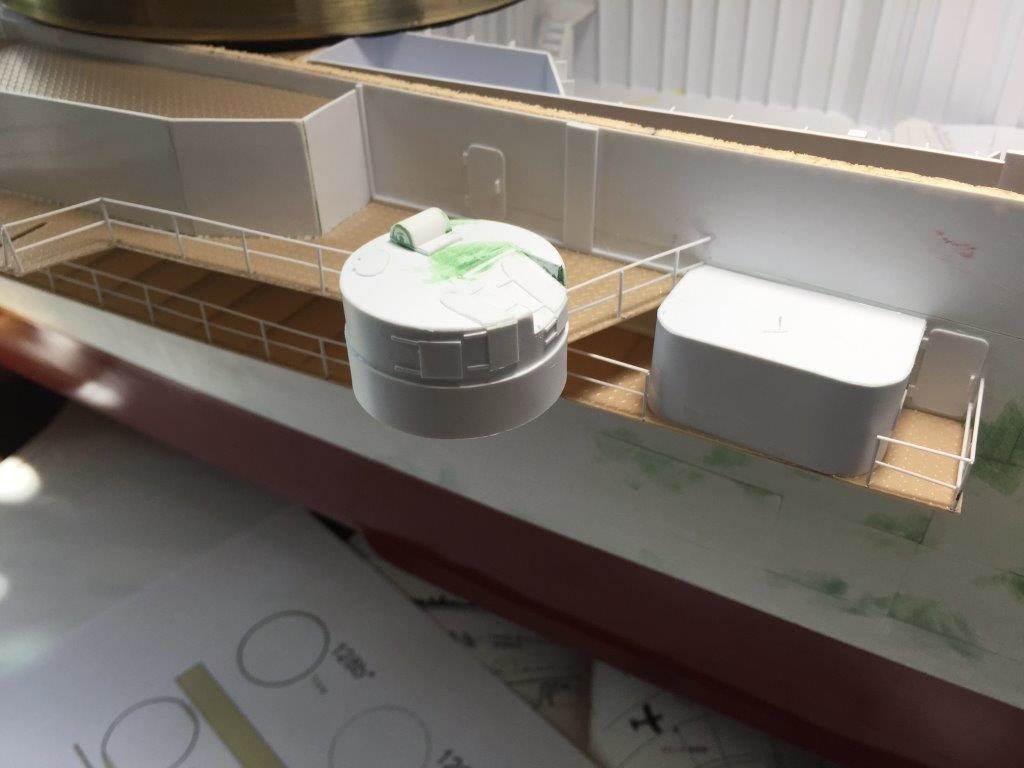

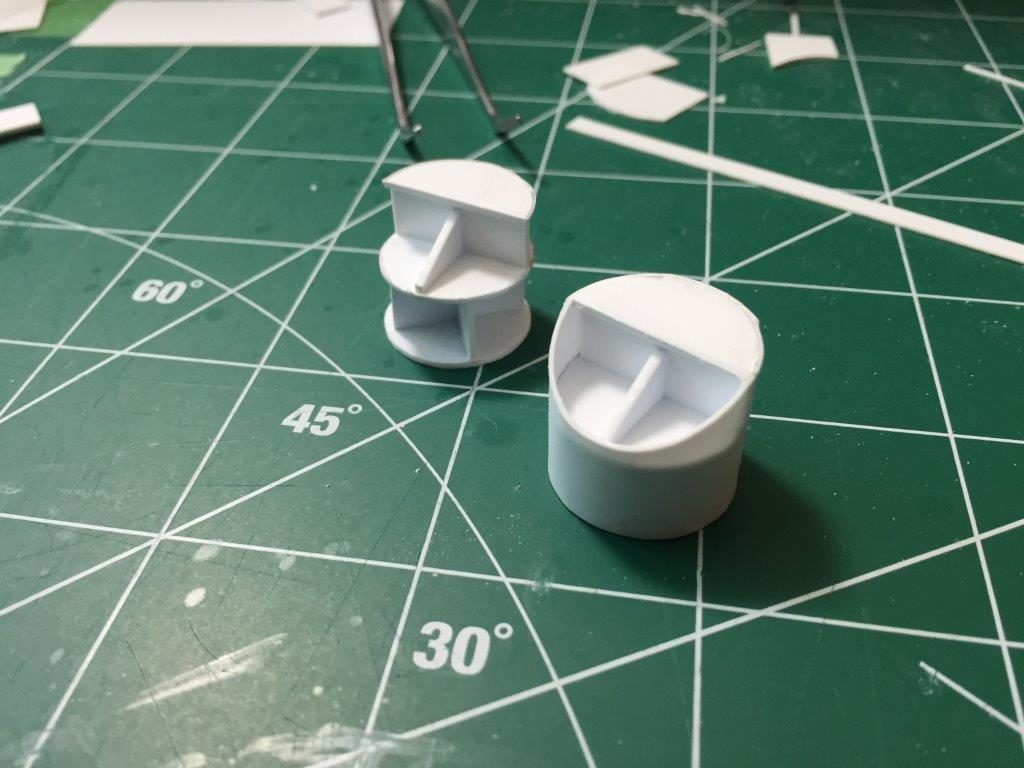
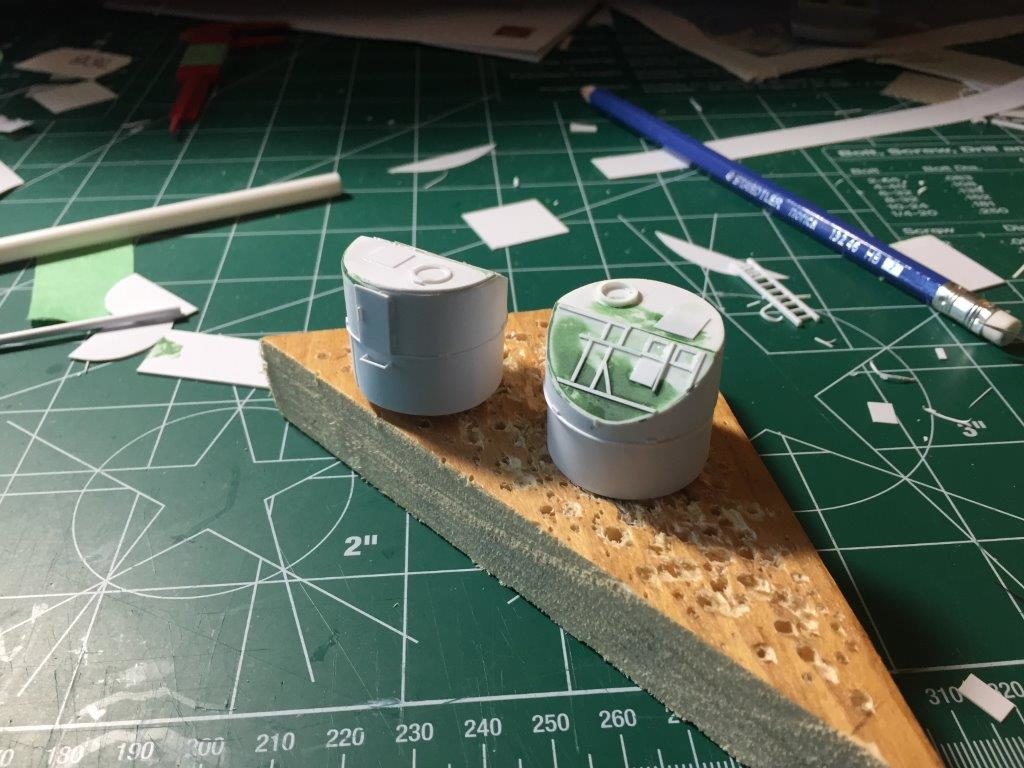
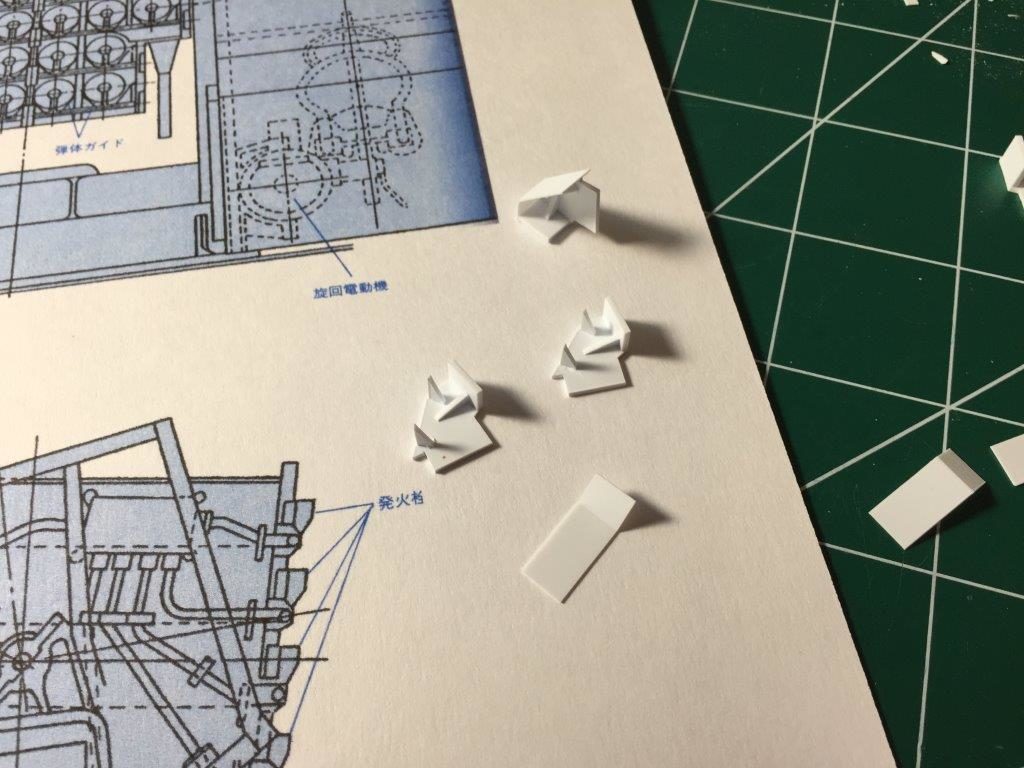
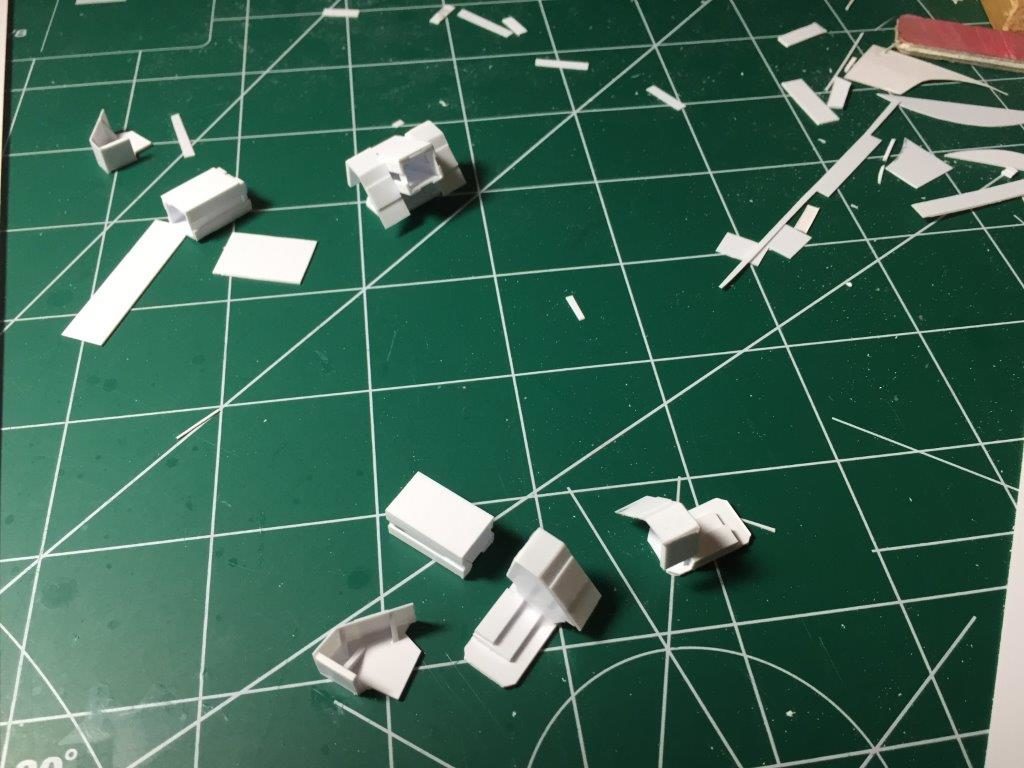

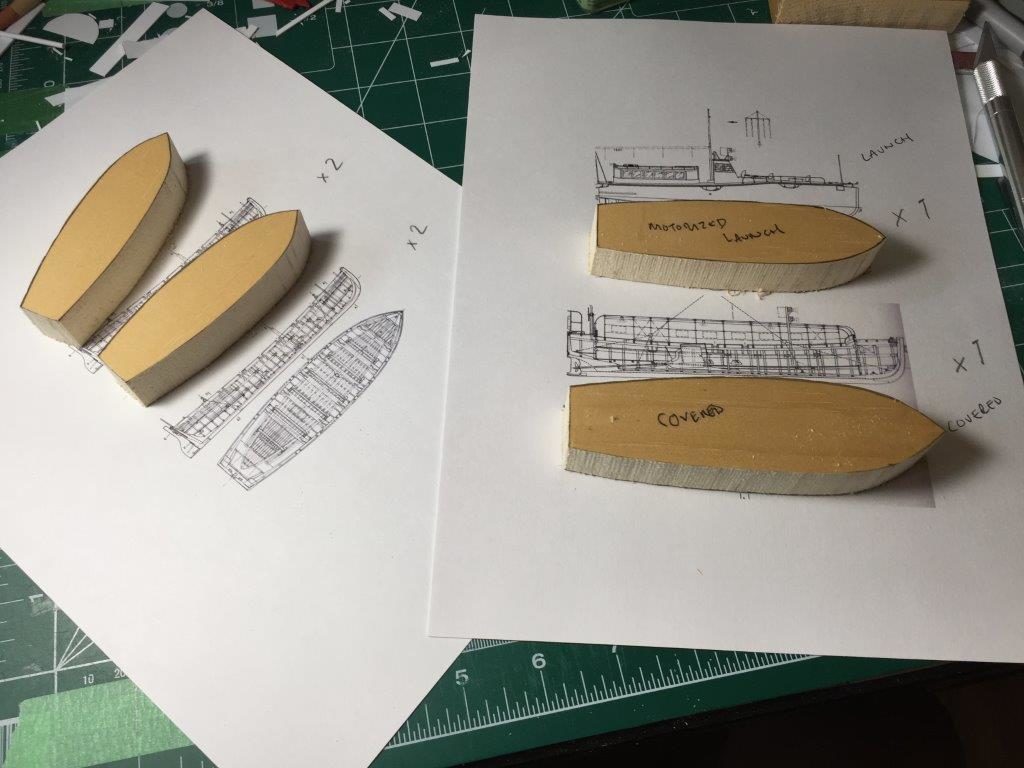
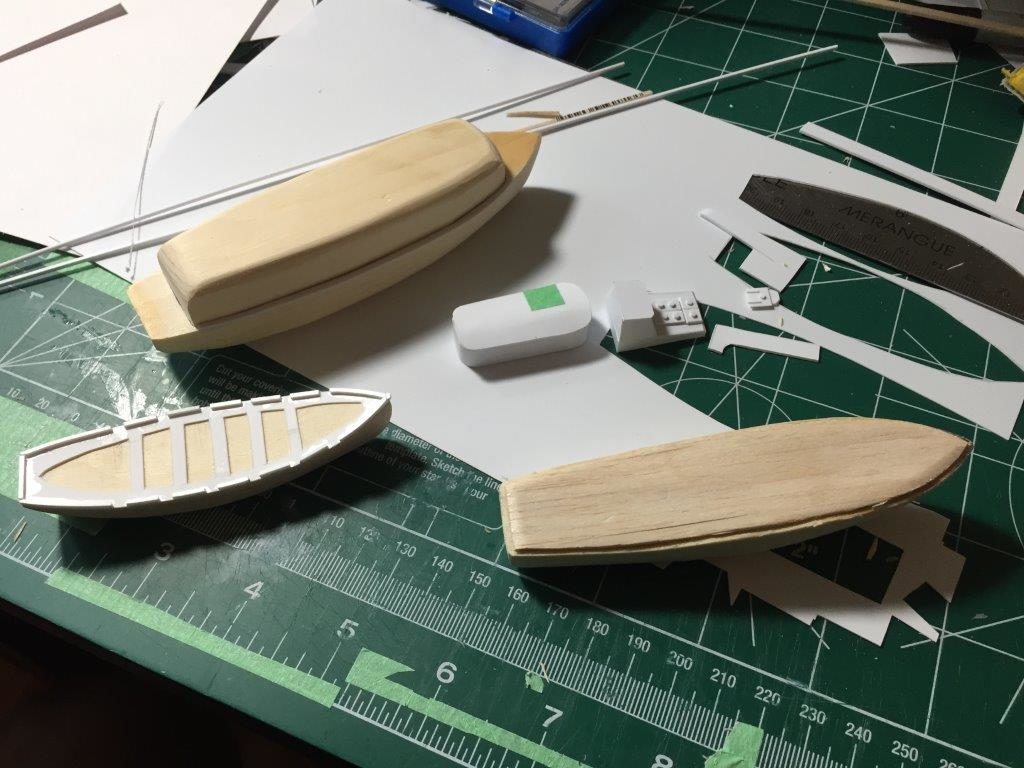
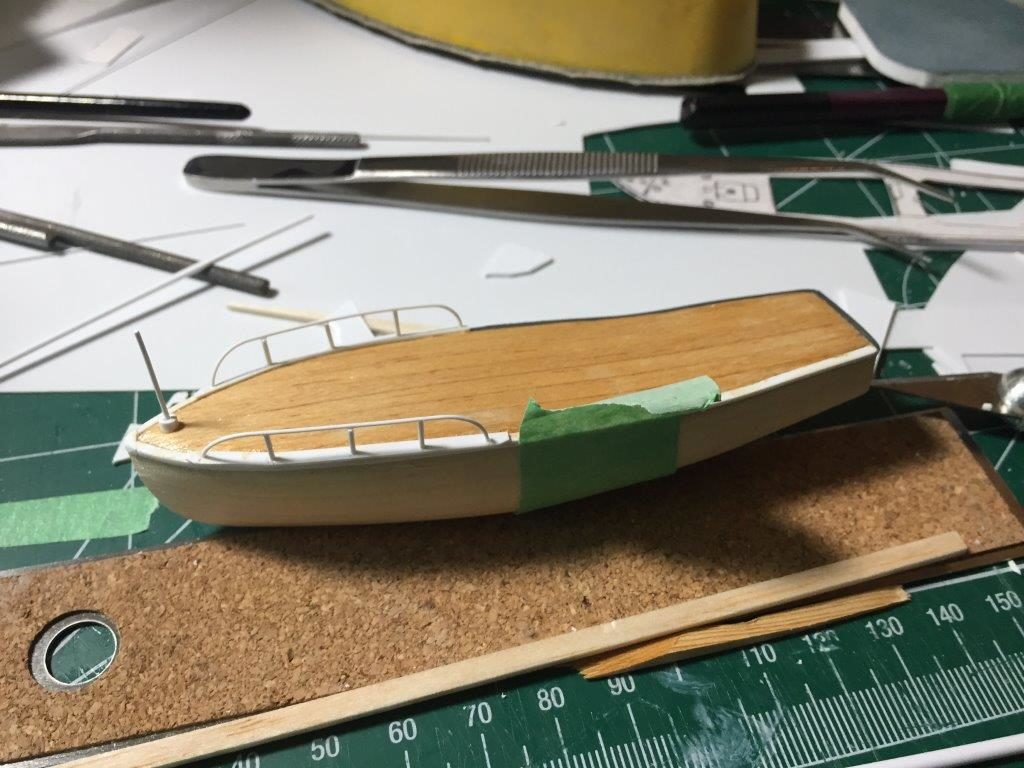
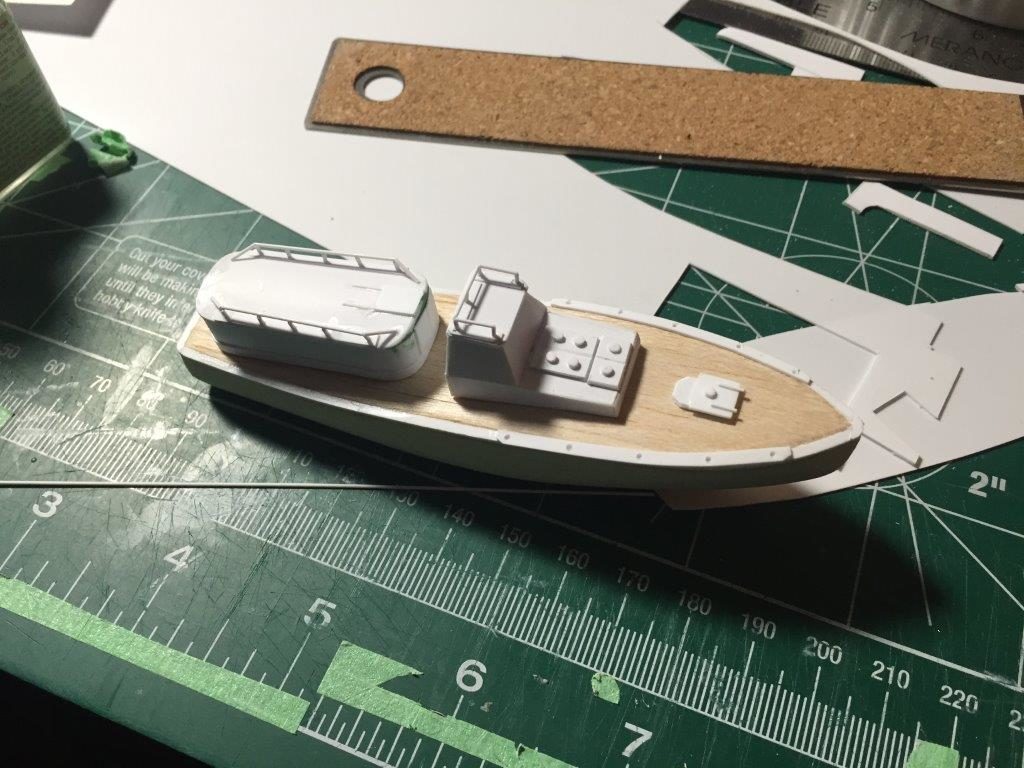
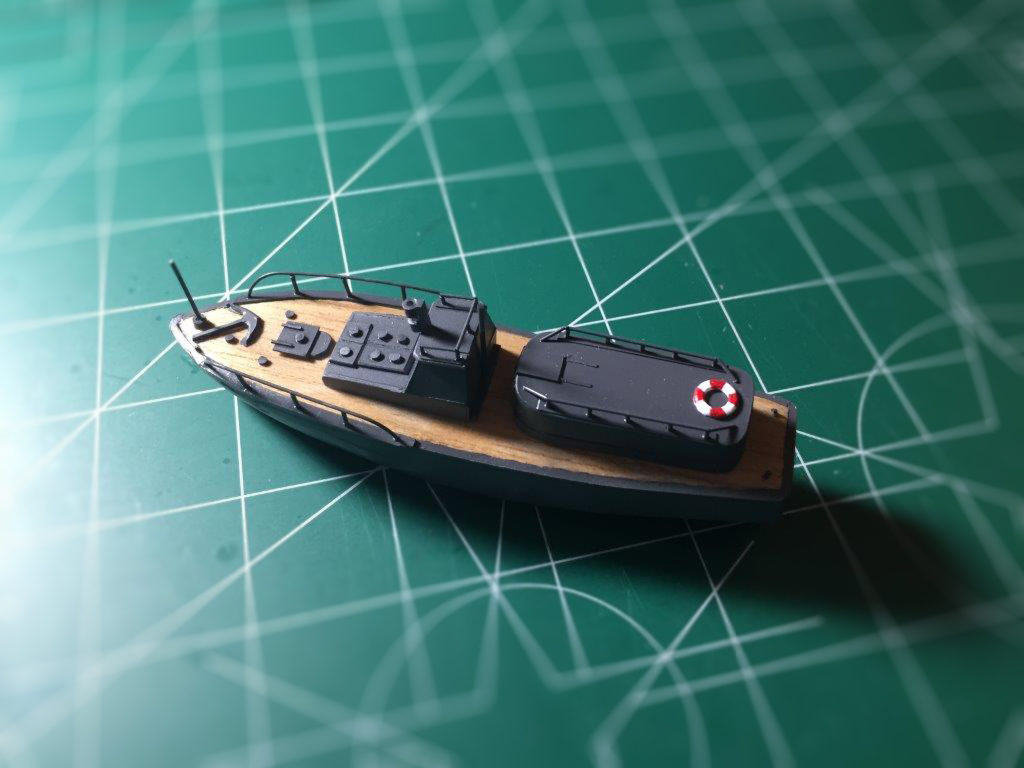
The railings around the entire ship were completed. These weren’t too hard as I was attaching styrene to styrene and the adhesion was quick. I had also predrilled post-holes into the sponsons edges and attached thin strips underneath. That way the railing posts had a place to grab onto and provided a bit more strength to the base of each post. It also meant that each post was of uniformed height every time. I used the same method where railing were located, but there were no sponsons (the bow, superstructure and stern), by predrilling post holes in a thin and narrow styrene strip and then glued that on top, along the edges. I admit there were mishaps, but overall it was satisfying to see the railings go up. They were made with .25″ styrene rods for the posts and .20″ styrene rods for the horizontals.
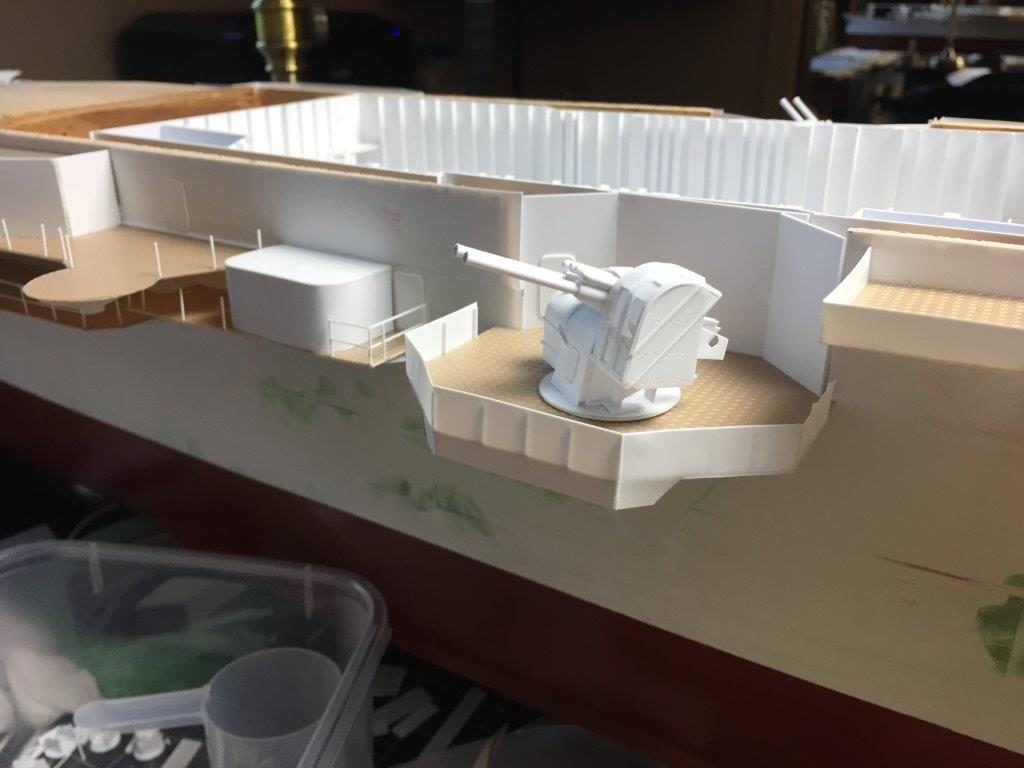
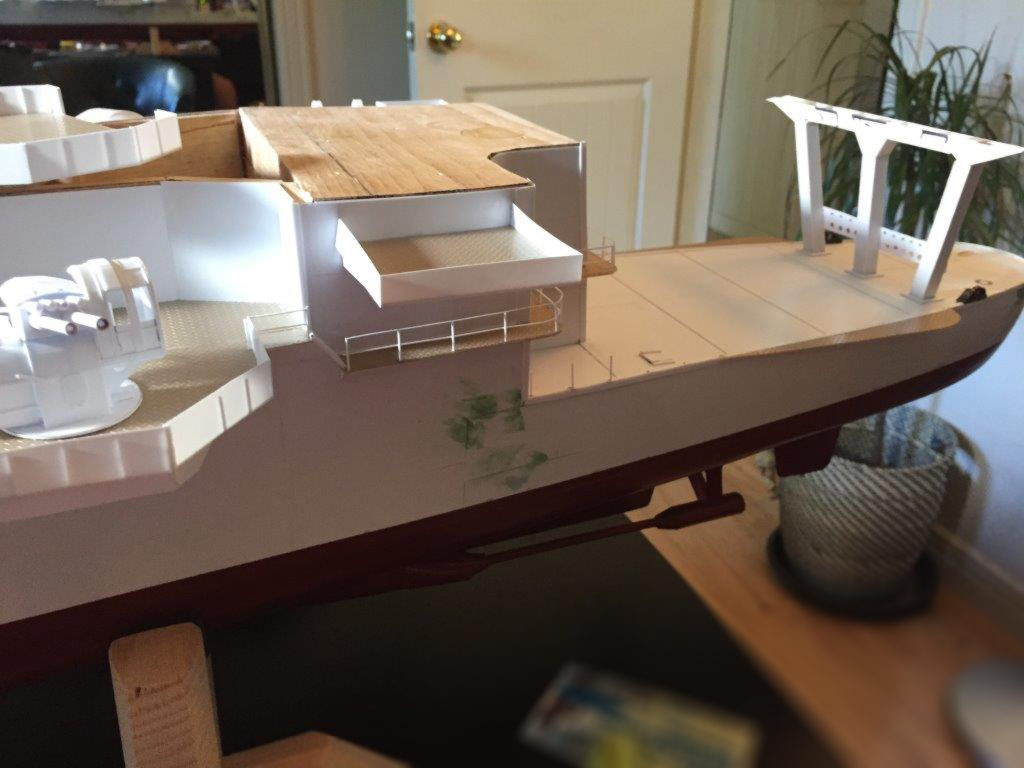
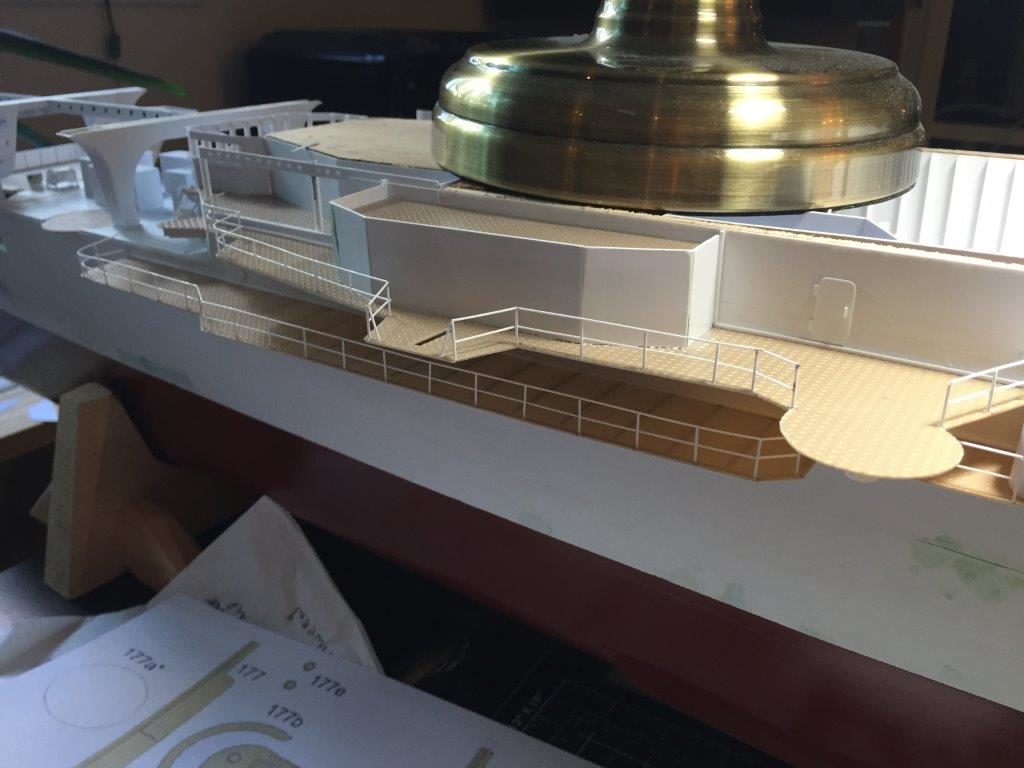
Captain’s Log: Fall of 2017
Next on the build were the searchlights and searchlight platforms. By this point I had become proficient enough with my styrene work to quickly build these. Both searchlights and their respective platforms took me about 3 hours to build.
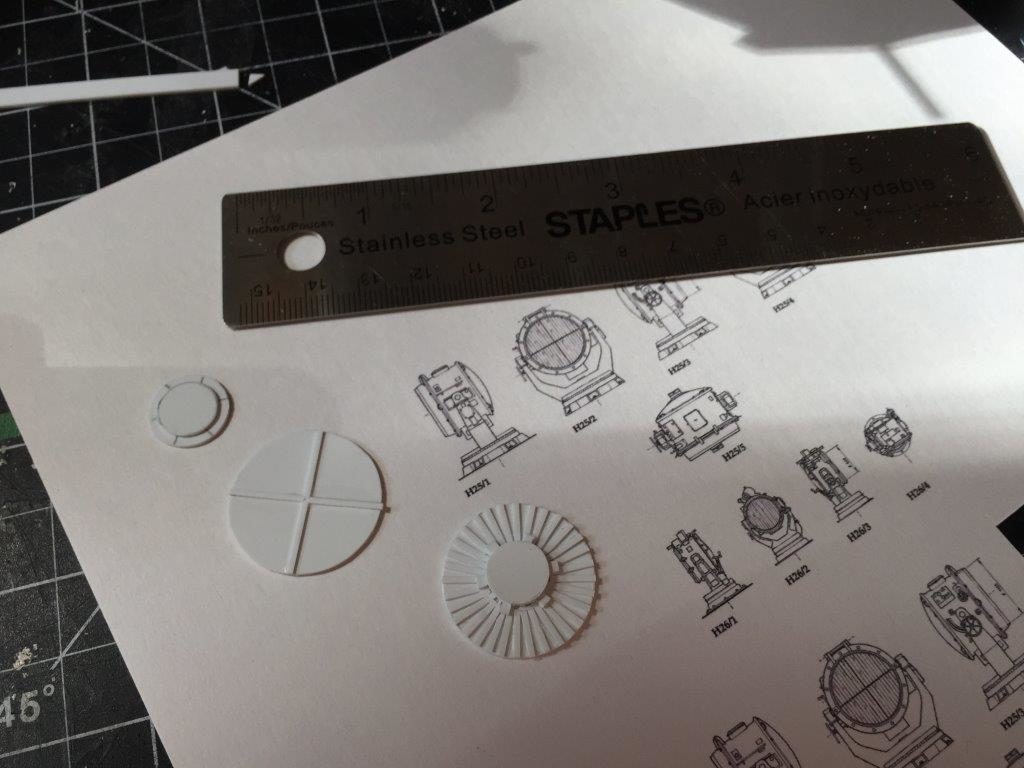
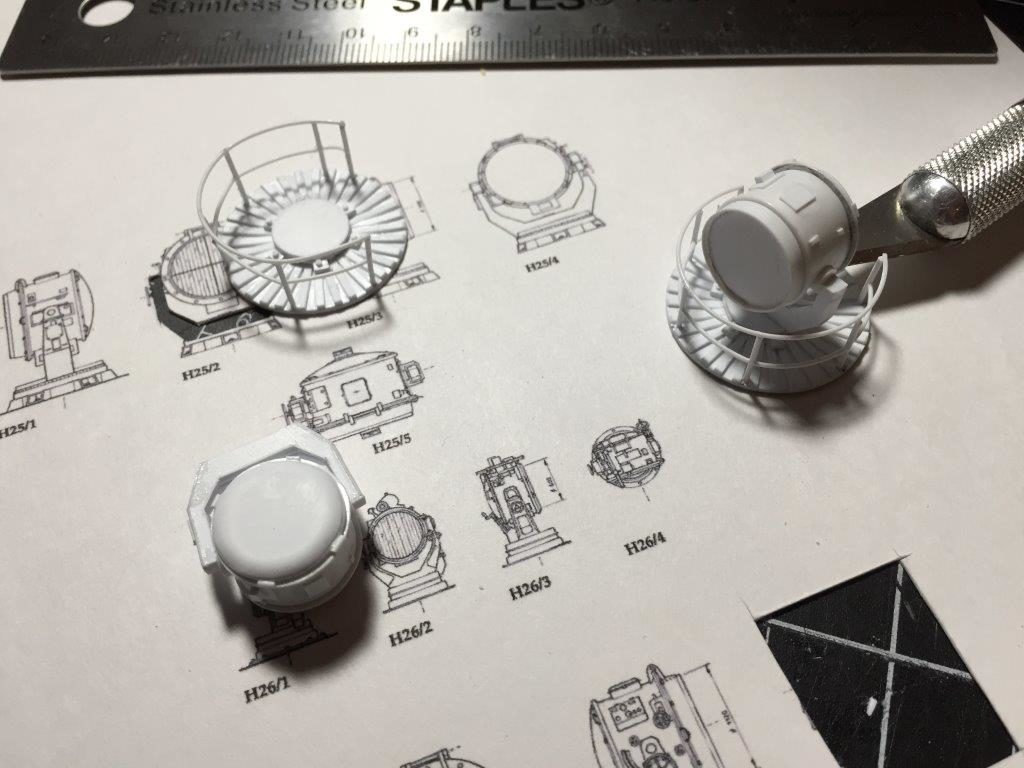
The degaussing cable was another tedious task. The lateral cable strips themselves were relatively easy, but the support brackets were many (120 per side, give or take) and were made up of five individual small pieces of styrene strips each. The close up of the degaussing cable below also shows the curved funnel with a rather ridiculous railing. There were no clear drawings or pictures of her funnel’s railings, so I made a guess. Upon reviewing other Japanese carriers of different classes, none of them had this rather large and leaning railing system on the funnel. I removed it eventually and replaced it with a more conservative estimate of what she may have actually sported.
Next was the addition of all the diagonal sponson support posts. These were measured and attached so that all the 25mm gun supports met the hull at the same height and the ranger finder supports met the hull at another uniformed height. With the addition of the support posts the ship really looked like it should, albeit an alabaster white version!
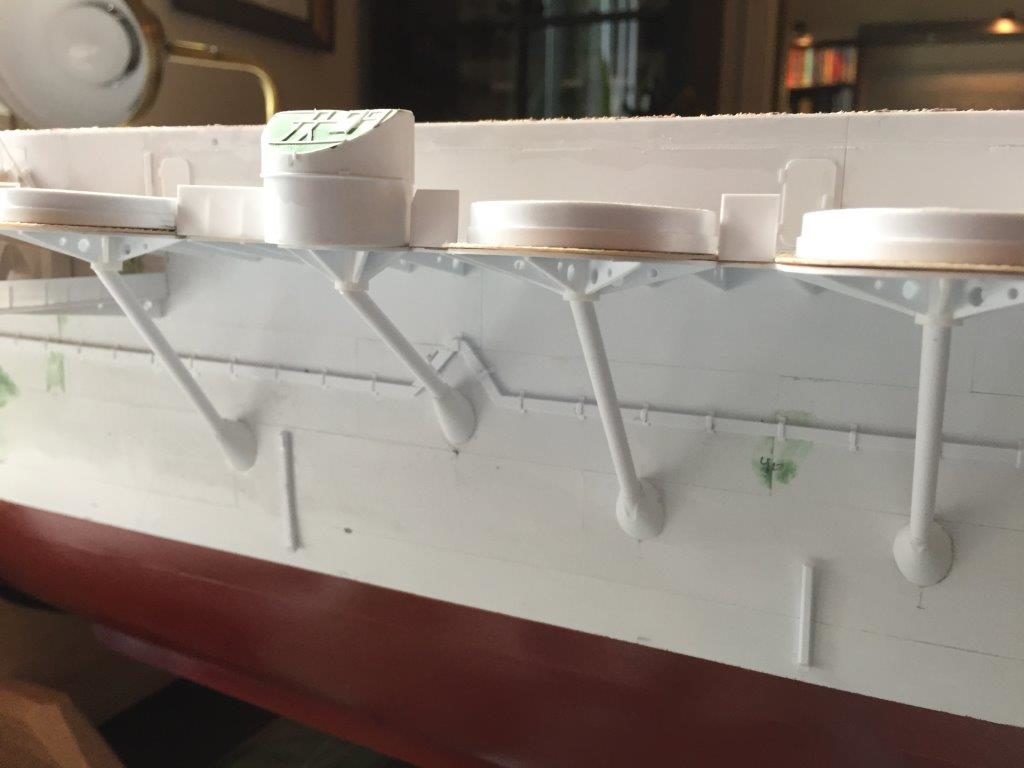

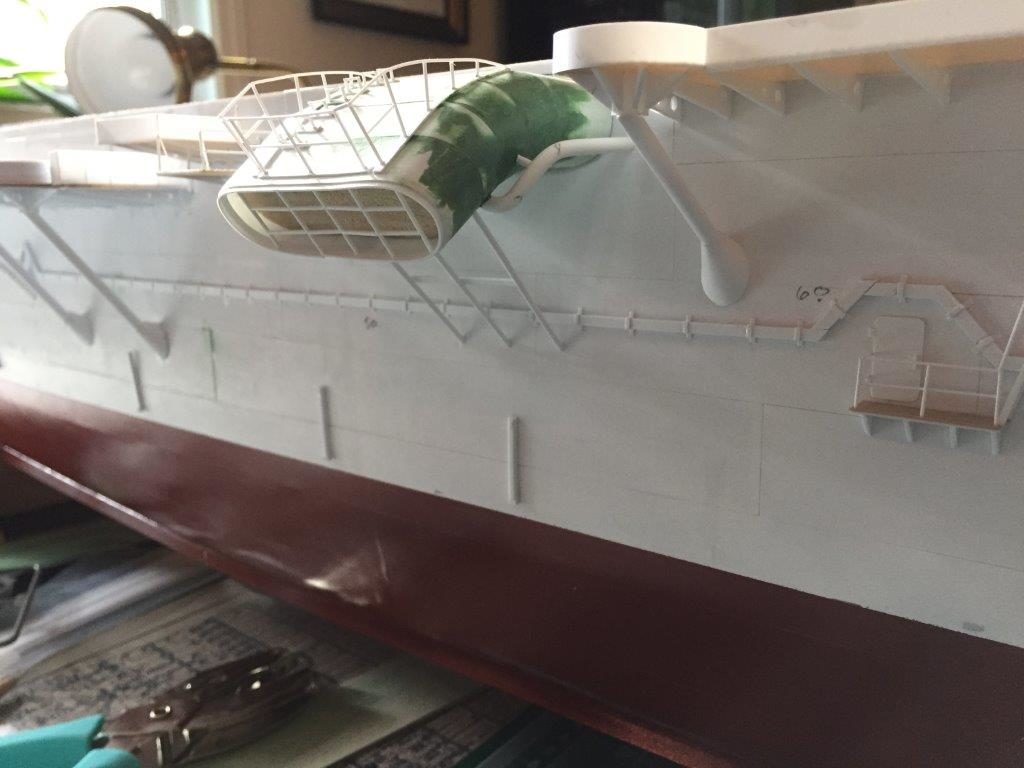
The last item to complete before I got to painting the upper hull and deck was the addition of the wings on the aft portion of the flight deck. This took me a few hours to complete. Easy enough! (You can see the carriers “wings” in the second set of pictures after the next paragraphs)
To say I was equally anxious and excited to finally be painting her is an understatement. The paint scheme on the flight deck was quite involved and I had never painted or masked a wooden surface before. I was able to match all the colours of the ships camouflage with off the shelf Tamyia colours with the exception of the most widely used colour, the light green.
- The dark green was Tamiya J.N. Green (XF-11)
- The dark brown was Tamiya NATO Brown (XF-68)
- The light brown was Tamiya Desert Yellow (XF-59)
- The dark grey was Tamiya IJN Gray (Sasebo arsenal) (XF-77)
- The light green was obtained by mixing one 10ml bottle of Tamiya Flat White (XF-2) plus 4ml of Tamiya Olive Green (XF-58) (5:2 ratio)
The Tamiya paint went on beautifully with the airbrush (as it always does). The masking tape did pull up minuscule potions of the wood, but I was able to touch up those spots with a brush. The white lines and Kanji were next and finally the flight deck was completed, once I masked and added layers of red for the aft portion of the flight deck and the wings. I tried two types of painters tape when painting the hull and they were both poor substitutes. One had too much adhesive and pulled up the wood and the other, touted as feather grip, would not stick to the wood properly. Once again the Tamiya masking tape was the absolute best option and never pulled any wood up and stayed fast until I pulled it up. I finished off the flight deck with a coat of Future and two coats of Tamiya Dull-Coat spray.
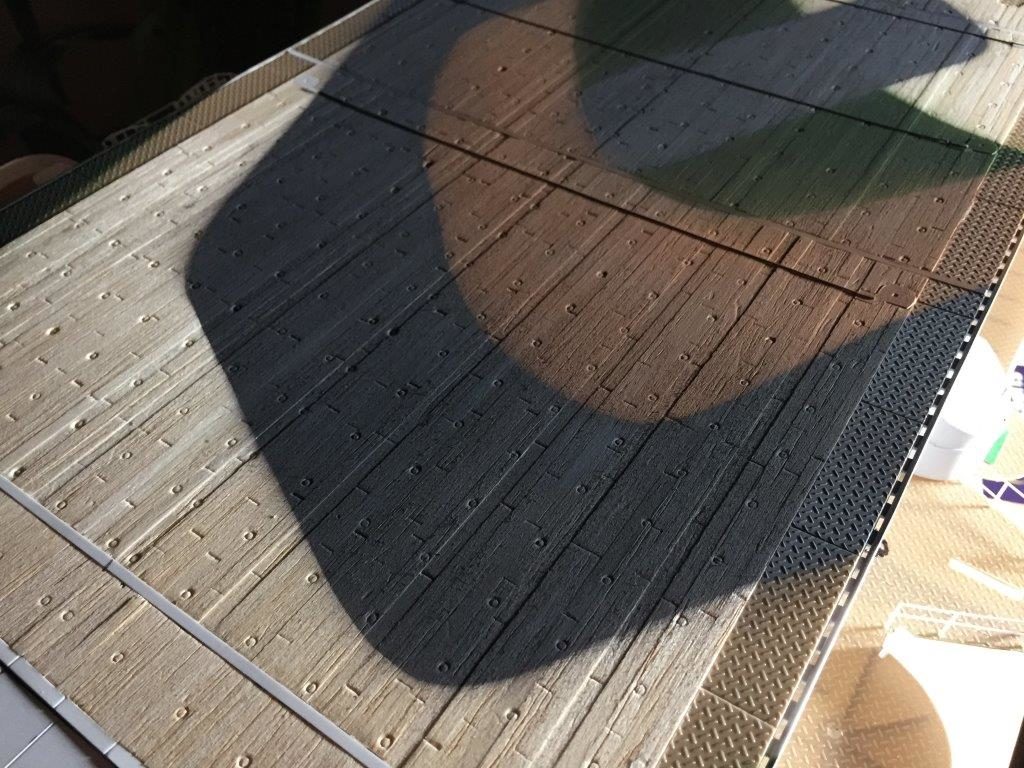
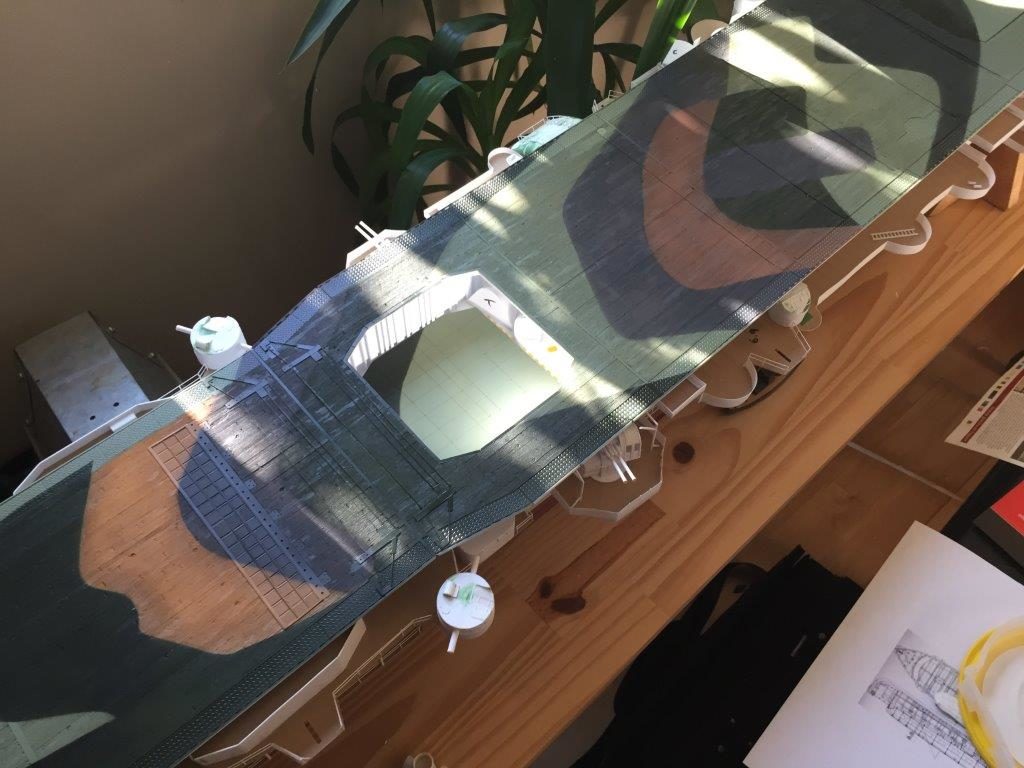
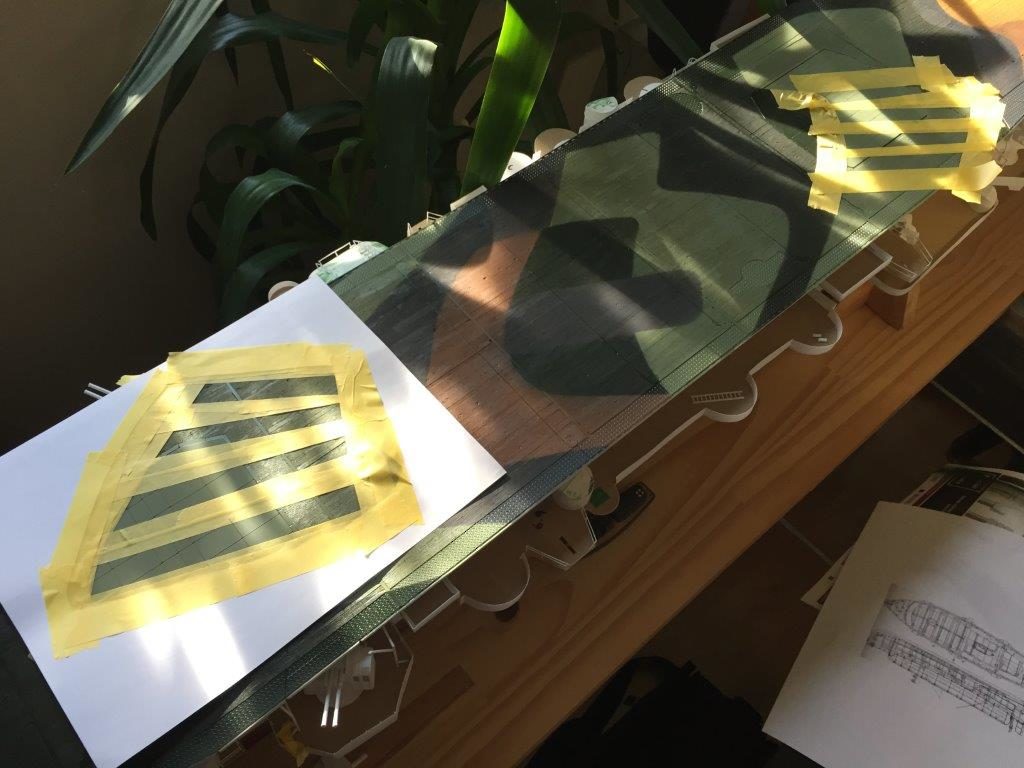
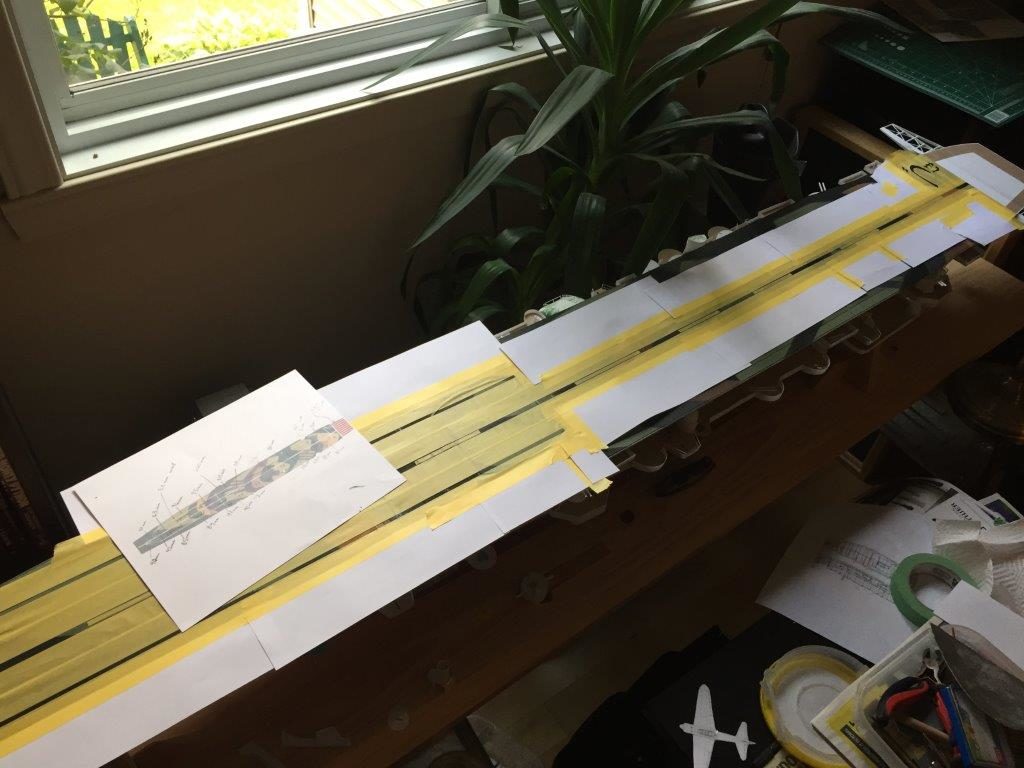
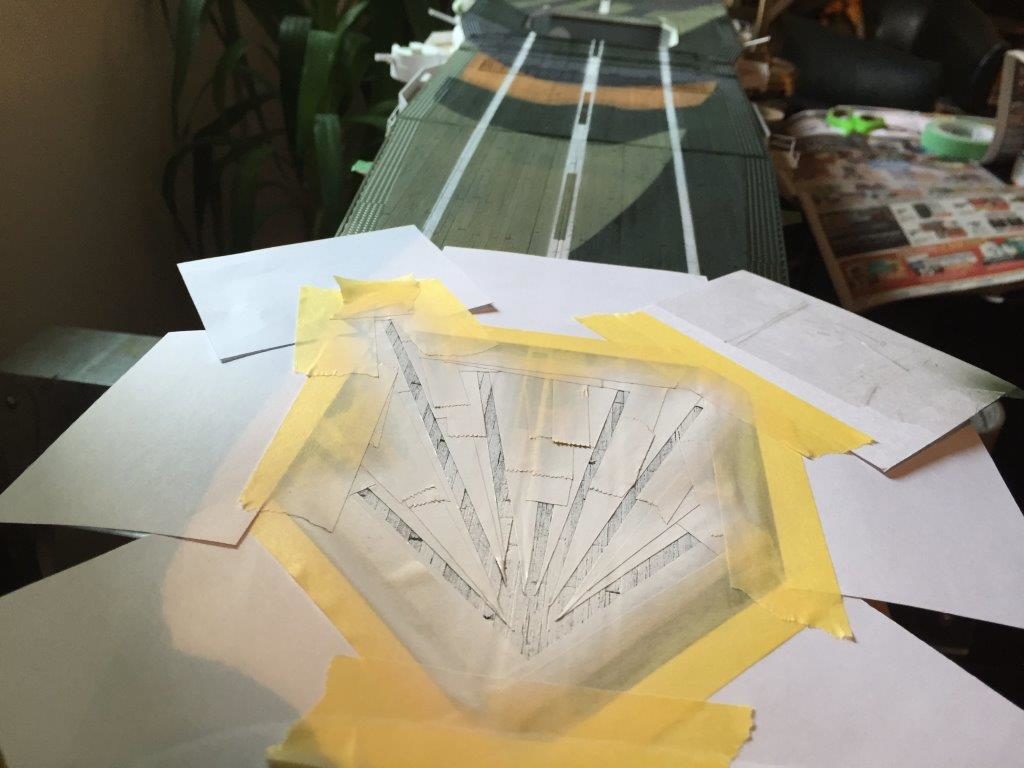
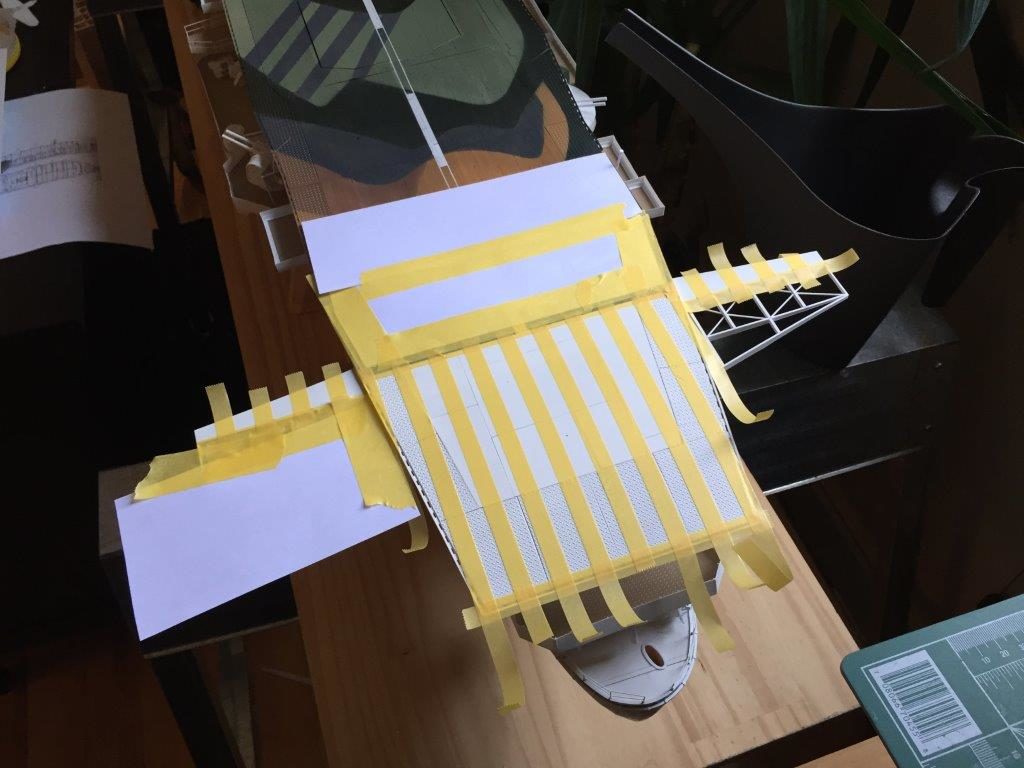
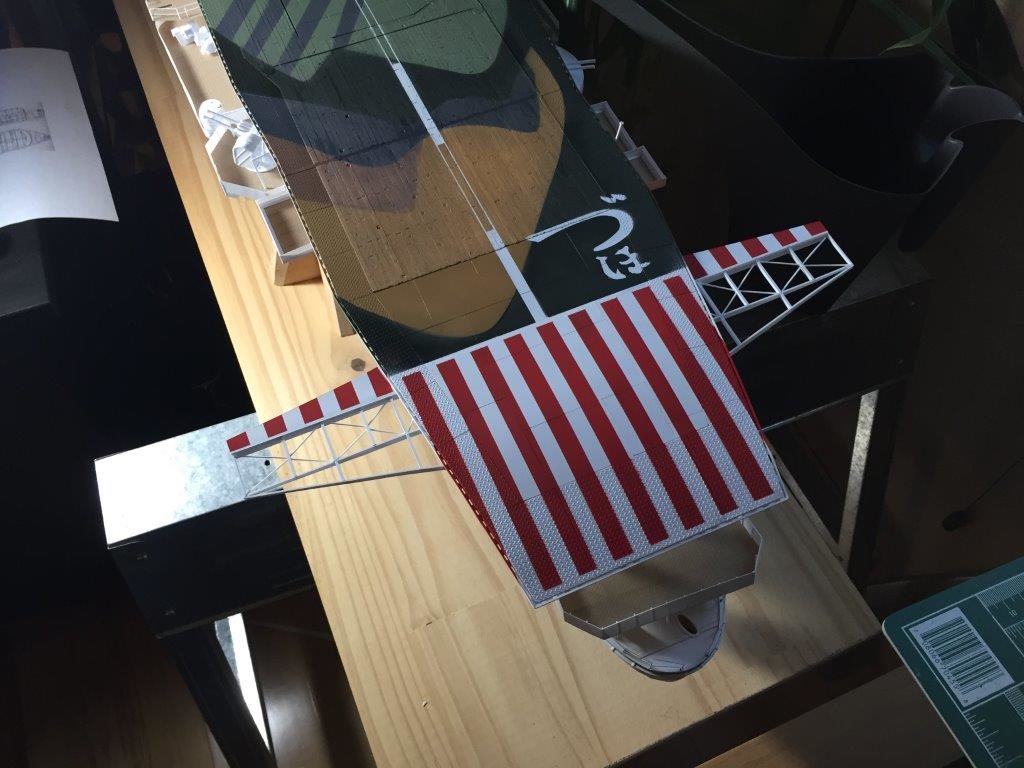

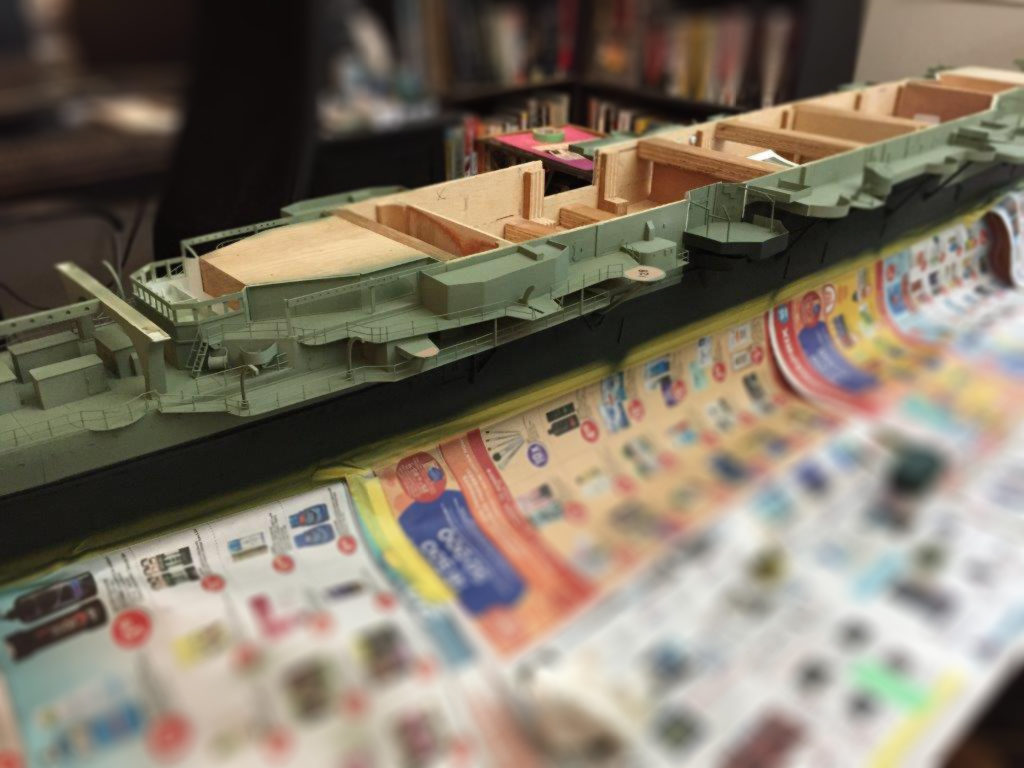
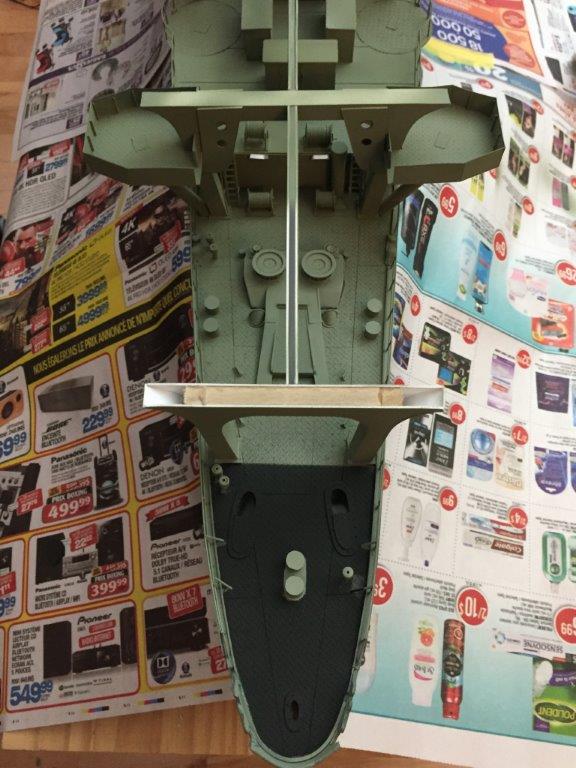
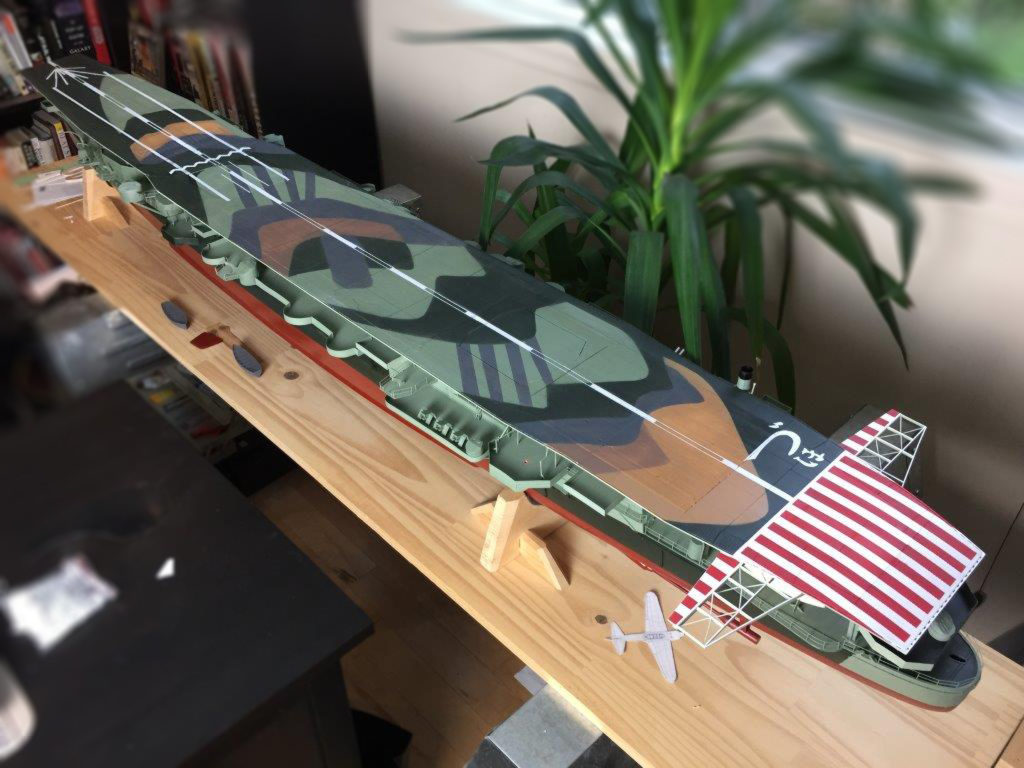

At this point I built both bow anchors from styrene and painted them black. The trickiest part of the job was in painting the rest of the upper hull and super structure. This had the two tone colouring (dark green and light green). What made it difficult was masking around the support posts and details of the upper works. All told, the painting of the ship took me 2 hours for the flight deck and 3 hours for the rest of the ship. I went through a lot of Tamiya paint, but I would only accept the best paint for the Zuiho: I was not disappointed. The anchors were attached and then the Future coats were applied.